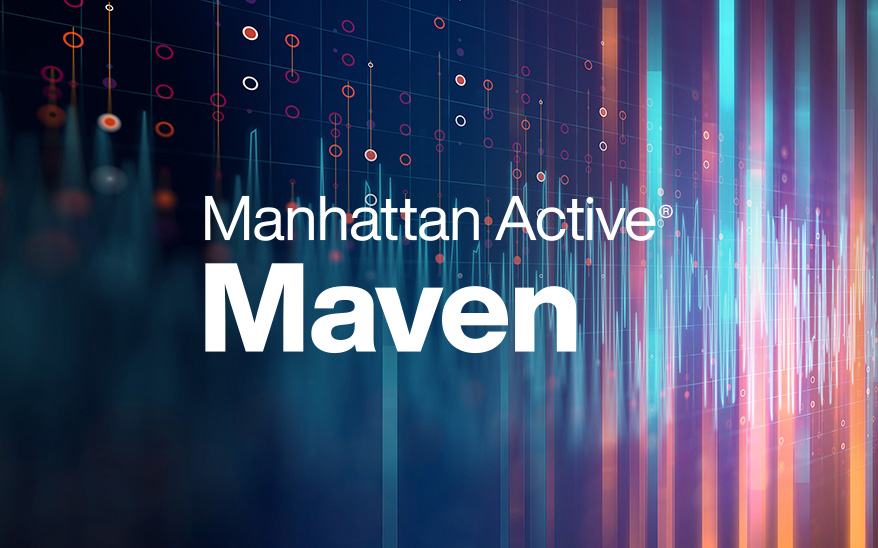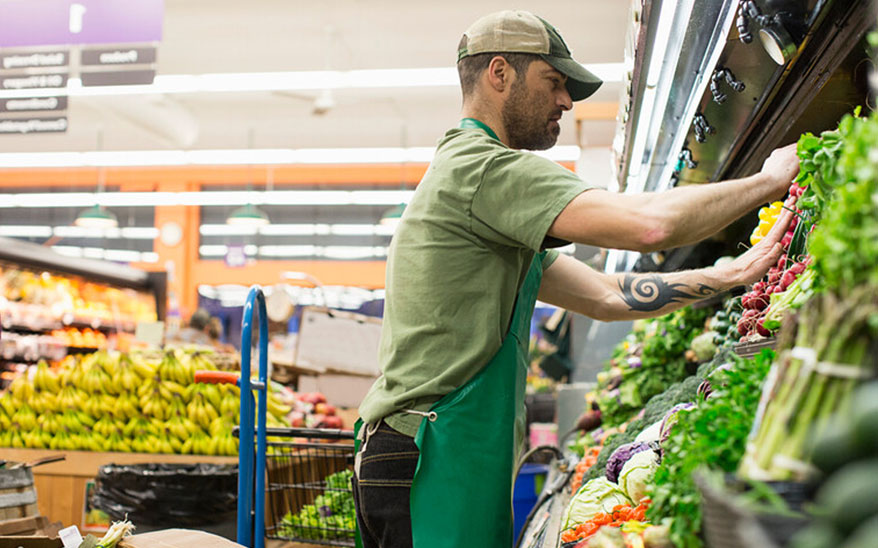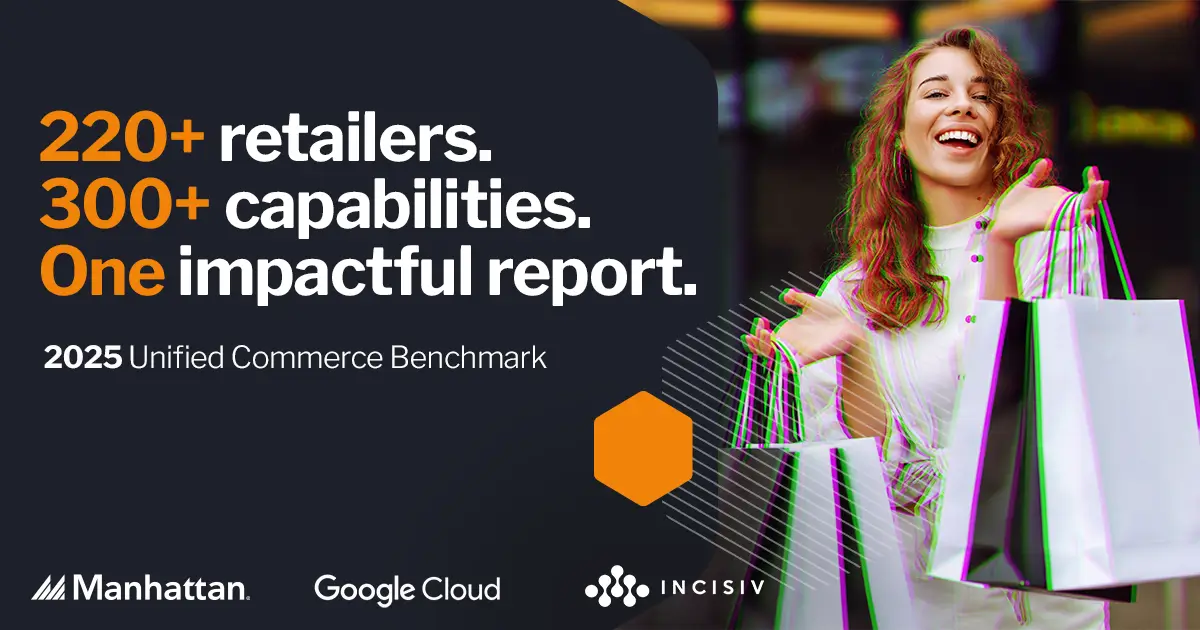What is Omnichannel?
- March 27, 2023
- By Manhattan Staff

Deciphering Omnichannel Strategies
Defined: Omnichannel is a retailer’s ability to provide a unified, consistent, customer experience across all channels for the entire buying journey, usually through a native omnichannel solution, such as Manhattan Active® Omni. That means having a single, 360-degree view of customers across the entire network. It means having global inventory visibility across all stores and warehouses. It means enabling customers to choose where they buy items, how and when they pick them up and return them – while also being able to apply promotions across it all. Omnichannel retail is open-ended and multi-directional. Today, it’s also a requirement for success.
The problem with understanding omnichannel is that omnichannel is extremely complex and difficult to achieve efficiently and profitably. It requires entirely new capabilities from retailers, because for decades, technology, processes and people have been operating in a more isolated (and frankly inefficient) manner.
Until recently, business in stores and through digital commerce were completely separated. Each store sold from a single location and was supplied with products from a distribution center. Online business was fulfilled directly from a warehouse, often devoted entirely to that function. The technology supporting each channel, and the functions within them, was siloed and often provided by different vendors.
Today, customer demands, the competitive landscape and conditions in the world at large have pushed brands toward omnichannel solutions.
Why is Omnichannel Commerce Important?
When understanding what omnichannel is, it is necessary to understand its importance in today's retail landscape. The world as a whole, and retail in particular, was moving to a more digital reality even before the pandemic. This was driven by the rise of brands like Amazon and the growing power of digitally native consumers. The pandemic accelerated the need for omnichannel retail exponentially. Fulfillment methods like buy online, pickup in-store (BOPIS), curbside pickup and home delivery all saw steep spikes. There is a new normal in retail.
However, most retail software solutions are not prepared.
Consider that a 473% average increase in online orders fulfilled by stores has led to reduced profitability for 79% of retailers. And more than 80% of shoppers plan to increase BOPIS and curbside pickup in the near future. In fact, 63% of retailers said their legacy infrastructure held them back from making necessary changes. It’s clear that legacy store solutions are not good enough to deliver great customer experiences or consistent profitability.
Even as have returned to stores, the demand for omnichannel retail has remained. In addition, retailers are seeing the rising economic power of Gen Z. According to a Bloomberg report, these young consumers have $360 billion in disposable income and that buying power is projected to increase each year as more and more Gen Zers join the workforce.
Typically identified as people born between 1997 and 2012, for these consumers the internet and smartphones have been an integral part of their entire lives. They are particularly brand loyal, but winning it means delivering the experiences they want. And what they want is the control, flexibility and options of omnichannel retail.
What are the Key Elements of Omnichannel Software Solutions?
In further defining what is omnichannel, let's look into the key elements of omnichannel. To execute a true, omnichannel software approach, a retailer needs a unified approach to selling, engagement and fulfillment in a single cloud-native app. That means shattering the boundaries between channels and offering universal capabilities available to any team member, in any location, at any time. More specifically, that includes point of sale (POS), order management, customer engagement and store inventory & fulfillment solutions.
Point of Sale
The right point of sale software needs to be more than just a cash register. It must house and facilitate all the capabilities that occur in the modern store. It needs to work in any store format, from flagship to popup, functioning across all device types and operating systems. It also needs to be able to seamlessly handle any type of transaction, from cross-channel purchases and returns to mixed promotions. Leading POS solutions, like Manhattan Active POS, are designed specifically for an omnichannel world.
Store Inventory & Fulfillment
Stores are no longer simply places where walk-in customers purchase products. Recent years have accelerated the adoption of online shopping and fulfillment methods like buy online, pickup in-store (BOPIS), curbside pickup, ship-from-store, store-to-store purchases and more. Those options, which offered retailers a means of survival during the pandemic, are now permanent fixtures. However, giving customers endless fulfillment choices, while maintaining profitability, requires true omnichannel operations. That means leveraging stores as micro-fulfillment centers with efficient picking processes. It means complete inventory visibility and management. Above all, it means being able to make and keep customer promises, but also maximize margins. Retail order fulfillment software is what makes everything possible. The right solution can create great customer and associate experiences, as efficiently and profitably as possible.
Order Management System
An order management system (OMS) is software that manages the lifecycle of an order. It tracks all the information and processes, including order entry, inventory management and fulfillment, and service. Leading OMS software offers global inventory visibility to both the business and the buyer, offering real-time insights. The right OMS operates as a single version of the truth for customer orders across all channels, and geographies. In an omnichannel world, it also improves operational agility to enable maximum profitability while keeping customer promises.
Customer Engagement Platform
Today’s consumers, especially Millennials and Gen Z, want more than a transactional relationship with retailers. They want to feel valued, seen and appreciated. A customer engagement platform is how to achieve those goals. The term encompasses how a brand interacts with customers across all transactions and touchpoints, whether they be in-store, online, through the call center and even digital self-service. The quality of those interactions goes a long way in determining the extent of the relationship a customer develops with a brand and further can be strengthened. Leading customer engagement solutions, like Manhattan’s, combine unstructured customer insights like social conversations with structured data like customer order history and buying preferences to give retailers the ability to deliver truly personalized experiences.
What Does Omnichannel Technology Look Like Today?
Despite the demands of omnichannel retailing, most of the industry is saddled with legacy solutions. They have completely separate systems for order management, customer service, point of sale, store fulfillment and so on. These technology architectures are incapable of truly unifying omnichannel processes like global promotions, inventory promising, order orchestration and in-store selling in the modern world. They are limited by large monolithic databases, customizations that must be duplicated over and over for every upgrade, and an untenable number of integrations.
Leading omnichannel retail software providers have taken an entirely different approach. Three characteristics define this technology: cloud native; 100% microservices and a unified platform.
Cloud Native
The terms “cloud” has become generalized to cover any solution being maintained outside the walls of an enterprise. Typically, terms like “runs on the cloud” or “hosted in the cloud” represent legacy architecture that has been modified to run in a remote data center. Solutions like these do not take full (or often any) advantage of cloud architecture. They still struggle with issues like extensions, implementations, upgrades, scalability, and more.
Conversely, “ cloud native” applications are born in the cloud, capitalize virtualization and containerization, use APIs extensively and leverage the scalability of the internet to autonomously harness vast amounts of computing power. These differences make them significantly more scalable, dependable and affordable. They also are the only solutions that can meet the needs of modern retailers.
100% Microservices
Modern omnichannel solutions are built entirely with microservices, or discrete functional components that eliminate the need to duplicate capabilities and data. Technology, like Manhattan Active Omni, shares the same composable, microservices components. That means they never need upgrading and they are fully extensible, which allows companies to plug in their own innovation, without impacting future updates. They are also scalable, automatically adding capacity to meet spikes in demand and then reducing it when the needs lessen. An omnichannel solution powered by a microservices architecture can also seamlessly and continuously add new innovations and capabilities over time.
Unified Platform
As stated earlier, traditional retail technology setups are piecemeal, with different solutions for functions like order management, customer engagement, point of sale and store fulfillment. Although companies put a lot of effort into trying to integrate them all, the legacy model inevitably created silos.
The best omnichannel solutions are architected on a single platform which opens the door to unification and flawless modern experiences. Rather than separating stores and ecommerce, brands can support the consumer's interactions and commerce, regardless of how he or she decides to buy, fulfill and return or exchange. Unified operations gives everyone in the organization shared to the same, 360-degree view of the customer. And, it means having total visibility to all inventory in every warehouse and every store, along with the ability to leverage it.
In retail’s new normal, these are the survival traits brands need. And they are only possible with a unified omnichannel platform. During the height of the pandemic when retail stores were shut down, retailer Kendra Scott was faced with a disastrous scenario for Mother’s Day, which is one of its biggest days of the year. Working with Manhattan, Kendra Scott implemented ship-from-store capabilities in just six days to free up stranded inventory and surpass expected sales.
What Does Omnichannel Commerce Look Like in Action?
Leading omnichannel software shatters the boundaries between channels and makes capabilities universal, so they are available to any team member, in any location, at any time, all in one app. Retailers gain command and control of every aspect of the omnichannel retail experience. At headquarters, in the contact center or in the store, everyone now has the same holistic view of customers, inventory, orders, pickups, returns, and more – regardless of role, location or channel.
As Manhattan CEO Eddie Capel said, “Almost every company is, in some way, shape or form, getting closer to the consumer.”
Sell Anywhere
Having a true understanding of omnichannel will lead you to the conclusion that as a retailer, you must be able to sell anywhere. To compete effectively in today's brick-and-mortar retail environment, merchants need a selling platform that helps store associates get ahead of their connected customers. The right solution can be deployed anywhere — in the store, on traditional, fixed Windows terminals or on mobile iOS and Android devices — using the same responsive interface in all form factors and any store format. Leading solutions, like Manhattan Active Point of Sale, are built on resilient cloud technology, so even when the network goes down, retailers have off-line operations with full checkout support, including pricing and promotions.
Engage Anywhere
Engaging with consumers anywhere is a pillar of understanding what is omnichannel. As consumer expectations rise, customer engagement and customer service become arguably the most important pieces to get right. Certainly, nothing is more critical in terms of building loyalty and repeat business. No longer is service simply about generic engagement and problem resolution. Now, customers demand that experiences be personalized the moment they get online or interact with associates. Pricing, promotions, preferences, history and more need to be accessible to all team members, at every stage in the buying journey.
As the buying power of digitally native shoppers grows, digital self-service is also a crucial aspect of customer engagement. Leading omnichannel software enables consumers to manage every aspect of their buying experiences. From modifying orders to switching delivery dates and times to changing fulfillment methods, customers must be able to dictate what, when and how of their orders.
Fulfill Anywhere
The ability to manage the entire lifecycle of inbound and outbound customer transactions, regardless of channel, has become paramount. The best omnichannel solutions orchestrate and optimize every aspect of an order from promising to inventory management to fulfillment execution to delivery. In fact, that technology is the only way retailers can deliver great customer experiences that also maximize profits for the organization. Understanding that today’s retailers must be able to fulfill anywhere helps to expand on our definition of omnichannel.
Manhattan’s Omnichannel Success Stories
Manhattan works with more than 75% of the top 50 retailers in the world, helping them create omnichannel experiences that delight customers and drive business success. Explore just a few of the many examples:
Pvh: One of the most admired fashion companies in the world remade fulfillment processes to meet ecommerce demand.
Kendra Scott: The jewelry brand implemented ship-from-store capabilities in just days to turn a crisis into an opportunity.
Lamps Plus: The largest lighting retailer in the US is using Manhattan POS to modernize it’s retail operation.
What does your omnichannel retail journey look like? Schedule a demo and discover how Manhattan’s omnichannel solutions can help bring your vision to life.





